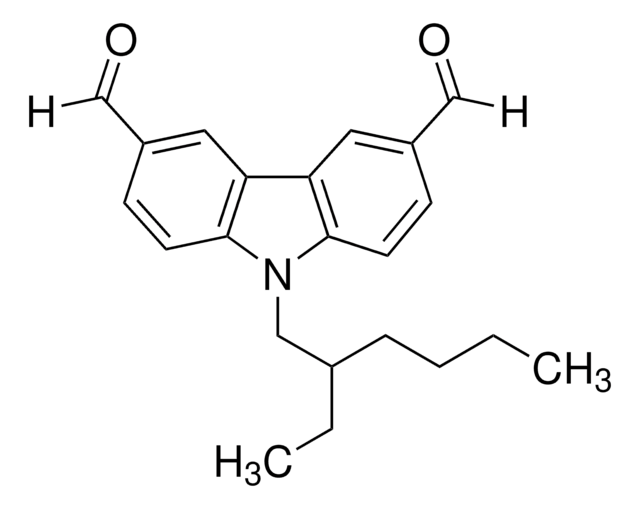Wichtige Dokumente
259004
3,6-Dibromcarbazol
97%
Synonym(e):
3,6-Dibromo-9-H-carbazole, 3,6-Dibromo-9H-carbazole
About This Item
Empfohlene Produkte
Qualitätsniveau
Assay
97%
Form
powder
mp (Schmelzpunkt)
204-206 °C (lit.)
SMILES String
Brc1ccc2[nH]c3ccc(Br)cc3c2c1
InChI
1S/C12H7Br2N/c13-7-1-3-11-9(5-7)10-6-8(14)2-4-12(10)15-11/h1-6,15H
InChIKey
FIHILUSWISKVSR-UHFFFAOYSA-N
Suchen Sie nach ähnlichen Produkten? Aufrufen Leitfaden zum Produktvergleich
Allgemeine Beschreibung
Anwendung
Signalwort
Warning
H-Sätze
Gefahreneinstufungen
Eye Irrit. 2 - Skin Irrit. 2 - STOT SE 3
Zielorgane
Respiratory system
Lagerklassenschlüssel
11 - Combustible Solids
WGK
WGK 3
Flammpunkt (°F)
Not applicable
Flammpunkt (°C)
Not applicable
Persönliche Schutzausrüstung
dust mask type N95 (US), Eyeshields, Gloves
Hier finden Sie alle aktuellen Versionen:
Analysenzertifikate (COA)
Die passende Version wird nicht angezeigt?
Wenn Sie eine bestimmte Version benötigen, können Sie anhand der Lot- oder Chargennummer nach einem spezifischen Zertifikat suchen.
Besitzen Sie dieses Produkt bereits?
In der Dokumentenbibliothek finden Sie die Dokumentation zu den Produkten, die Sie kürzlich erworben haben.
Kunden haben sich ebenfalls angesehen
Unser Team von Wissenschaftlern verfügt über Erfahrung in allen Forschungsbereichen einschließlich Life Science, Materialwissenschaften, chemischer Synthese, Chromatographie, Analytik und vielen mehr..
Setzen Sie sich mit dem technischen Dienst in Verbindung.








